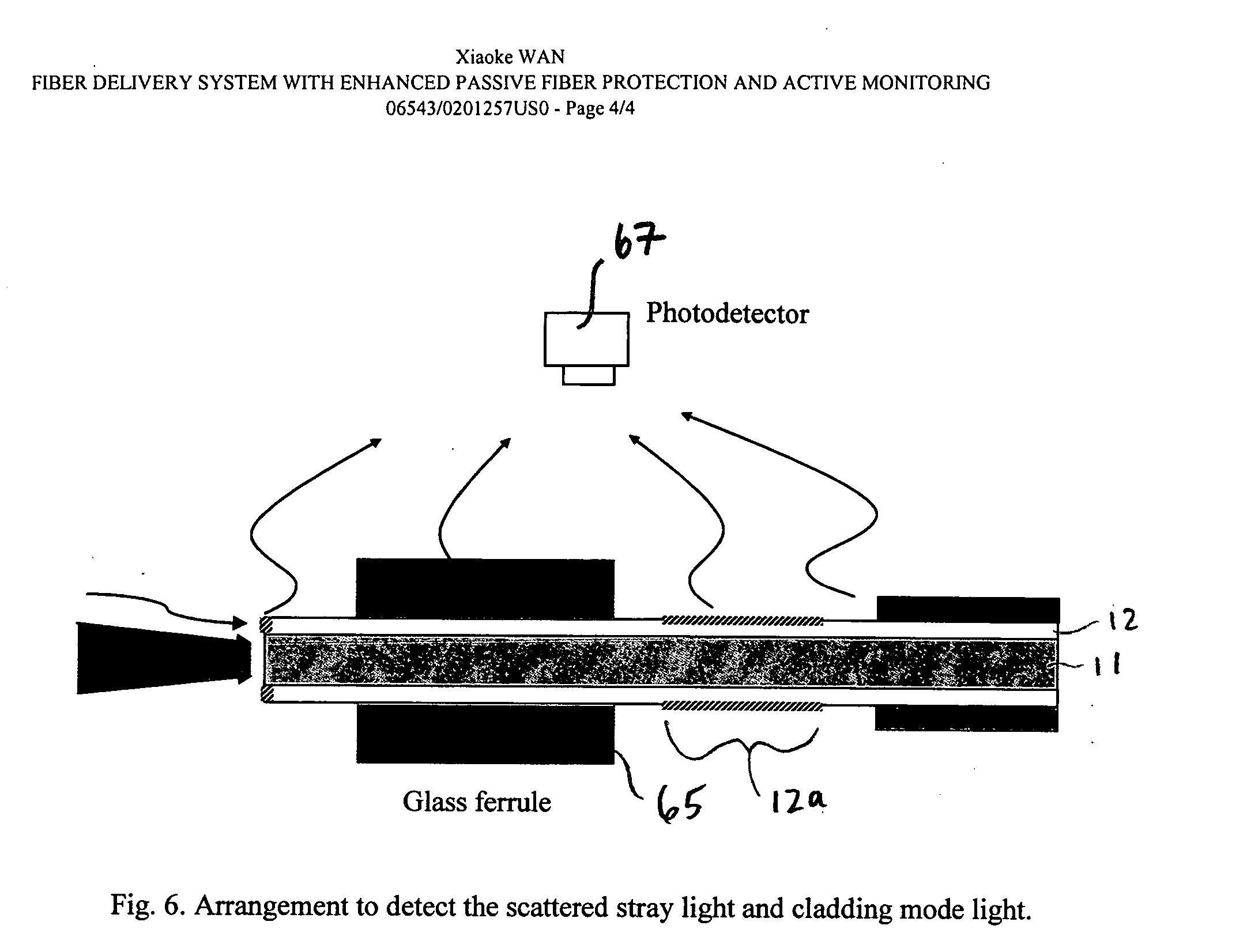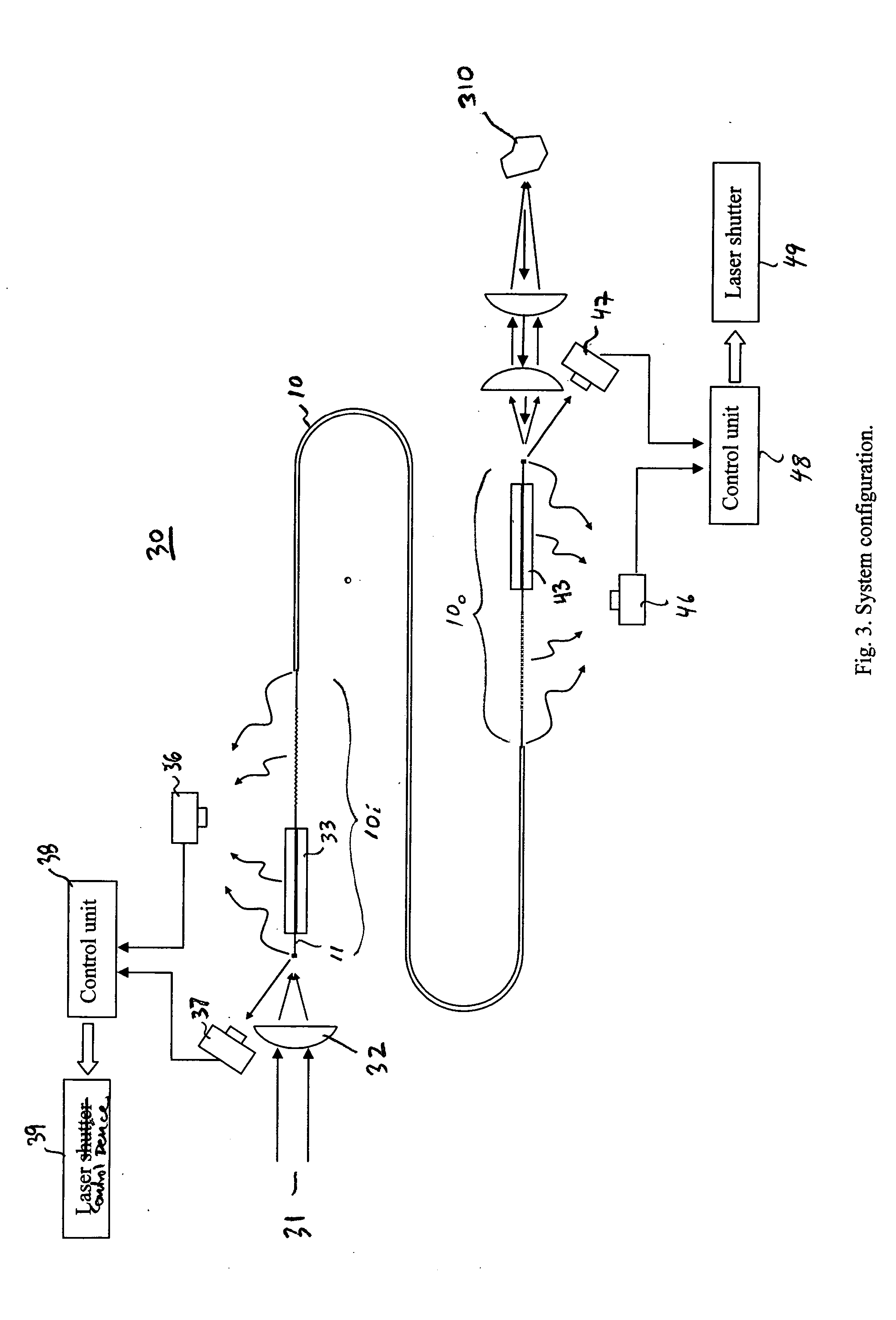Fiber delivery system with enhanced passive fiber protection and active monitoring
a fiber optic and passive technology, applied in the field of fiber optic systems and methods, can solve the problems of laser-induced fiber failure, fiber failure, fiber failure,
- Summary
- Abstract
- Description
- Claims
- Application Information
AI Technical Summary
Problems solved by technology
Method used
Image
Examples
Embodiment Construction
[0027]FIG. 3 shows a schematic representation of an exemplary embodiment of an optical fiber laser delivery system 30 in accordance with the present invention. In an exemplary materials processing embodiment, the system 30 delivers a laser beam 31 applied to an input port of the system via an optical fiber 10 to a work piece 310.
[0028] In the exemplary system of FIG. 3, the laser beam 31 is focused into the fiber core 11 of a fiber 10 with a plano-convex lens 32. A portion 10i of the fiber 10 proximate to the input is bare; i.e., it does not include any outer layers of material. The bare fiber portion 10i is held by a glass ferrule 33 which is transparent to any stray light and also strips off a portion of cladding mode light. Over at least a portion of its length, the bare fiber portion 10i has a rough surface so that it further scatters off stray light and cladding mode light. The rough surface can be created in a variety of ways including, for example, sanding with a fine sand p...
PUM
| Property | Measurement | Unit |
|---|---|---|
| flexibility | aaaaa | aaaaa |
| resistance | aaaaa | aaaaa |
| total reflection | aaaaa | aaaaa |
Abstract
Description
Claims
Application Information
 Login to View More
Login to View More - R&D
- Intellectual Property
- Life Sciences
- Materials
- Tech Scout
- Unparalleled Data Quality
- Higher Quality Content
- 60% Fewer Hallucinations
Browse by: Latest US Patents, China's latest patents, Technical Efficacy Thesaurus, Application Domain, Technology Topic, Popular Technical Reports.
© 2025 PatSnap. All rights reserved.Legal|Privacy policy|Modern Slavery Act Transparency Statement|Sitemap|About US| Contact US: help@patsnap.com



